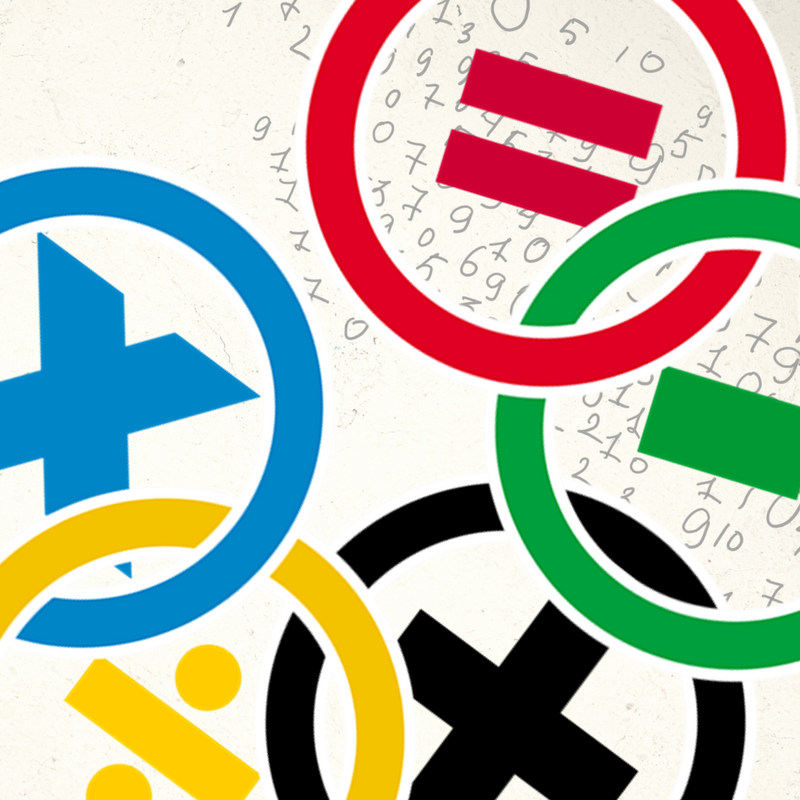What happens when goals for teaching math, and the strategies employed collide?
by Cathie Maglio, Blended Learning Specialist
When people talk about the Olympics, they mean the sporting event that happens every four years. But did you know there’s a math Olympics that happens every year? It’s called the International Mathematics Olympiad (IMO) and it’s for pre-college students. Over 100 teams compete for gold, silver and bronze medals. Earlier this year, the Republic of Korea took home the gold.
The IMO’s inaugural competition was in 1959. China entered in 1985 and has won the gold 19 times since, while the United States has won it only 6 times since its 1974 debut. Why have Chinese students beaten us so often in math? Speaking as a longtime math teacher, I think it’s the way math is taught in the two countries.
The Chinese way of teaching math focuses on mastery. The mastery approach is based on the premise that all students can succeed in learning math when given the proper instruction. This method is interactive: when the teacher poses a problem, students are expected to precisely explain both the solution and the underlying concepts to the rest of the class. This drill, in effect, makes the students also teachers. When students of varying levels of math ability are in the same classroom, the teacher will not move on to the next concept until everyone in the class has mastered the concept being taught. This means that fewer concepts may be covered in the course of the school year, but students will have mastered every topic.
This way of teaching math is gaining adherents because of China’s success on international tests. Britain has just adopted the “Real Shanghai Mathematics” curriculum at a cost of $54 million in hopes of raising math skills. The UK came in 27th in math on the last PISA, the international test given to 15 year-olds in 70 countries every three years by OECD. The US came in 40th. The top seven finishers were all East Asian.
The Chinese group instruction method may seem foreign to us; but the ideal of every student mastering every concept is what every math teacher strives for. And the way math scaffolds, it’s the only path to real mastery. But in my teaching experience, mastery often takes a back seat as we push on through a set curriculum that is loosely aligned to a set of state standards and a final standardized test. A teacher can only hope that all students have understood each concept and will be able to solve problems using it. But we need to move on to the next concept. Everyone knows that some students have not mastered the concept, are still struggling to understand it, and will fall behind as the class moves on to keep to the pacing guide and cover all of the curriculum. Teachers do not have the luxury of stopping and waiting for all students to catch up. It’s up to the individual student to find ways to catch up, such as before- or after-school help, if available, or private tutoring, if they can afford it.
Another component of the Chinese method is proper instruction. But speaking as a former student and current teacher, I have to say that there will always be students who struggle with math even with the best instruction. I had a great teacher in high school, Mr. Lindsay, who taught Algebra 2 and Calculus. He had the gift to teach math. I loved his classes! I absorbed everything he taught like a thirsty sponge. But I had a friend in Algebra 2 with Mr. Lindsay who had a difficult time learning the math even though she had exactly the same instruction I had. There are many examples like this. So how much does proper instruction figure into a student’s learning math? Every student is an individual with certain gifts and talents and sometimes math is not one of them. Does the Chinese method take this into account? Would Mr. Lindsay have been successful in China?
All approaches to teaching math (and other subjects) have the same goal: that all students will master all concepts and be able to solve problems using them. It’s in the strategy of pursuing that goal where the roads diverge. Which road has the better claim? Having no direct experience with the Chinese way, I can’t make an informed evaluation. I can say that many of the math teachers I work with in high schools and community colleges have a passion for teaching math and for making sure each student grasps every concept to the best of his or her ability. The best teachers know that teaching math is not only about grades and test scores. It’s about students feeling competent and successful in their ability to use math to whatever degree is possible for them.
Would the Shanghai group mastery method work in our individualistic culture? Well, the Chinese are now trying to incorporate American-style creativity into their curriculum. And they continue to send large numbers of their kids to school in America. So which of the diverging roads would make all the difference for us?
With apologies to the Brits, the Chinese, and Robert Frost, this traveler goes with the guidance of the great American pedagogue, Dr. Yogi Berra: When you come to a fork in the road, take it.
MATH related content found here.





